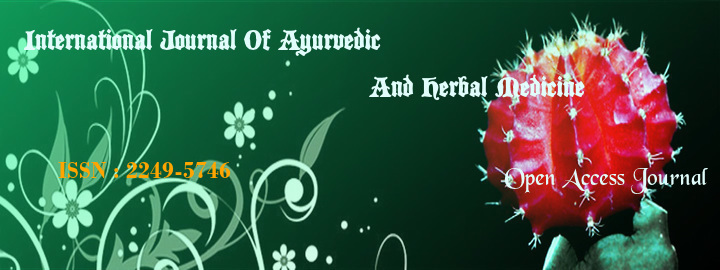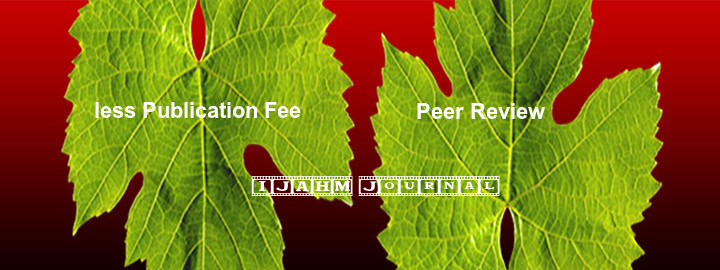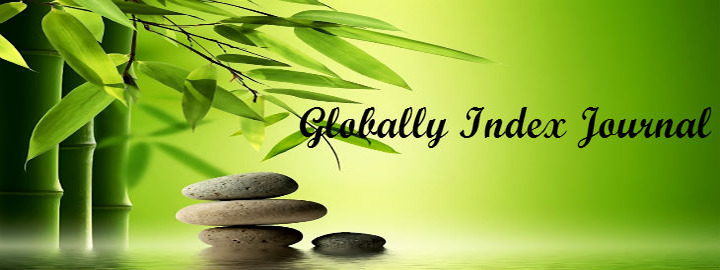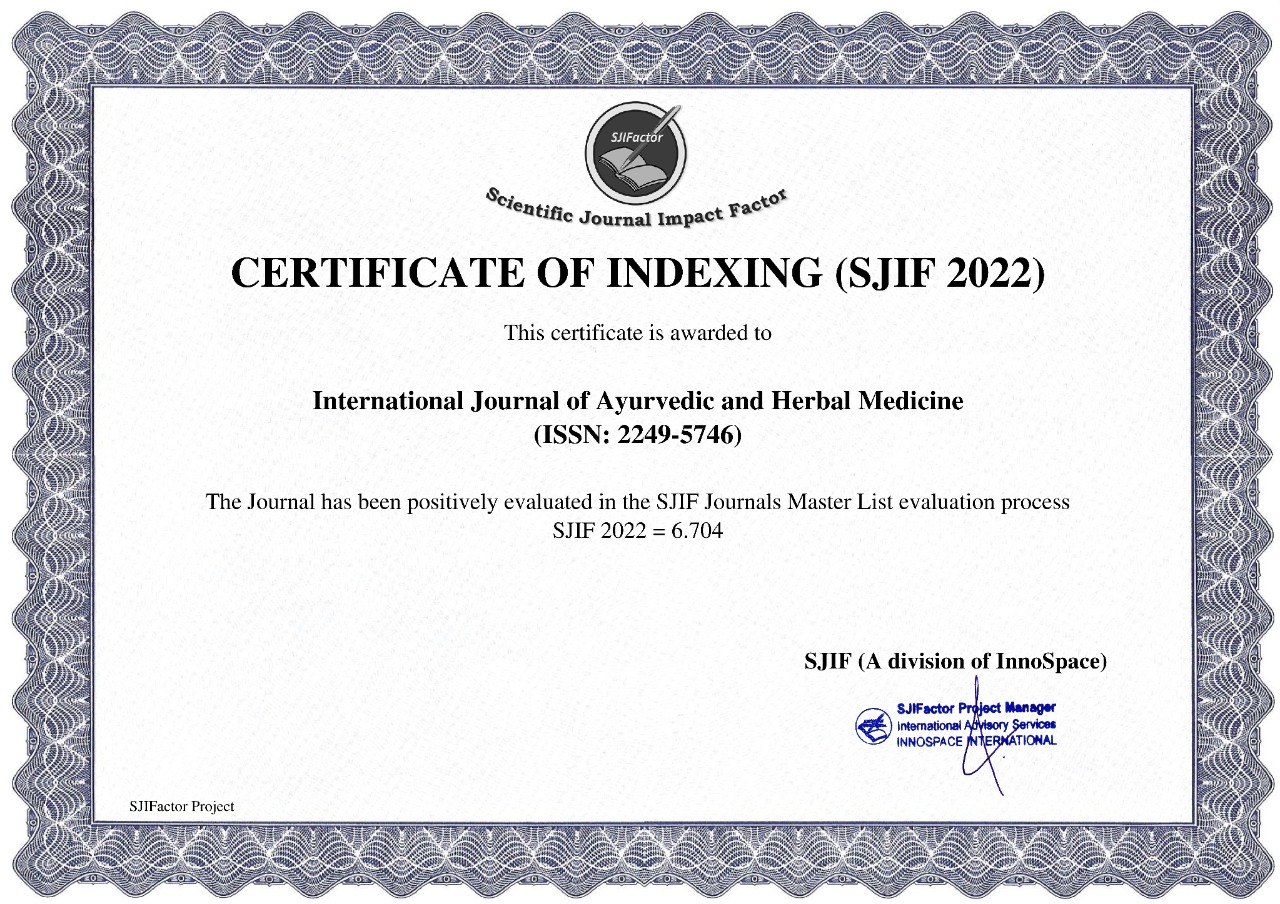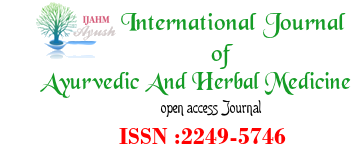


Kajaria Divya1 , Prof. Arun Gupta2
1Assistant Professor, Department of Kayachikitsa, C.B.P.C.S, New Delhi
2Professor & H.O.D. Department of Panchakarma, Ch.B.P.A.C.S, New Delhi
Corresponding Author: Dr.Divya Kajaria, Department of Kayachikitsa, C.B.P.C.S.
Email: This email address is being protected from spambots. You need JavaScript enabled to view it.
Abstract
The leading causes of mortality among aged people comprises of respiratory problems, heart diseases, cancer and stroke. Significant causes of morbidity among this group is chronic inflammatory and degenerative conditions such as Arthritis, Diabetes Osteoporosis, Alzheimer’s disease, depression, psychiatric disorders, Parkinson’s disease and age related urinary problems showing the paradigm shift of morbidity and mortality from communicable diseases to non-communicable one. The biggest challenge with geriatric diseases is that in most of the cases the condition cannot be attributed to a single cause or in certain conditions of neuro-psychiatric disorders like, Senile dementia, Alzheimer’s disease, depression, the structural cause is unknown. In such cases the conventional medical therapy fails to come out with effective management plan and hence is severely compromised. Another challenge with conventional medical therapy is that it does not have specific health-promoting agents. The word "yoga" comes from the Sanskrit root yuj, which means "to join" or "to yoke". Yoga is an ancient art based on a harmonizing system of development for the body, mind, and spirit. Patanjali’s famous definition of yoga is “yogas chitta vritti nirodhah”, which means “yoga is the controlling the fluctuations of the mind”. Chitta is mind, vrittis are thought impulses, nirodah is completely retraining. Yoga is method of channelizing energy through various physical and mental exercises. One can channelize his/her energy and can use it for fruitful purpose or destructive purpose. The paper will throw light on energy channelizing process through Yogic practices and its importance in combating geriatric diseases.
REFERANCES
- United Nations. Report of the Second World Assembly on Aging. Madrid, Spain: United Nations, April 8--12, 2002.
- Kinsella K, Velkoff V. U.S. Census Bureau. An Aging World: 2001. Washington, DC: U.S. Government Printing Office, 2001; series P95/01-1.
- World Health Organization. World Health Report 2002, Annex Table 2 (deaths by cause, sex and mortality stratum in WHO Regions, estimates for 2001). Geneva, Switzerland: World Health Organization, 2002:186--91.
4. Baena-González E.Energy signaling in the regulation of gene expression during stress. Mol Plant. 2010 Mar;3(2):300-13.
5. Donnelly M, Scheffler IE. Energy metabolism in respiration-deficient and wild type Chinese hamster fibroblasts in culture. J Cell Physiol. 1976 Sep;89(1):39-51.
6. Saatcioglu Fahri .Regulation of gene expression by yoga, meditation and related practices: A review of recent studies.Asian Journal of Psychiatry. 2013; 6(1):pp 74-77.
7. Cain CE, Blekhman R, Marioni JC, Gilad Y.Gene expression differences among primates are associated with changes in a histone epigenetic modification. Genetics. 2011 Apr;187(4):1225-34.
8. Li QZ, Li P, Garcia GE, Johnson RJ, Feng L. Genomic profiling of neutrophil transcripts in Asian Qigong practitioners: a pilot study in gene regulation by mind-body interaction. J Altern Complement Med. 2005;11: 29–39.
9. Bierhaus A, Humpert PM, Nawroth PP.NF-kappaB as a molecular link between psychosocial stress and organ dysfunction. Pediatr Nephrol. 2004 Nov;19(11):1189-91.
10. Forsythe JA, Jiang BH, Iyer NV, Agani F, Leung SW, Koos RD, Semenza GL.Activation of vascular endothelial growth factor gene transcription by hypoxia-inducible factor 1. Mol Cell Biol. 1996 Sep;16(9):4604-13.
11. Liu Y, Cox SR, Morita T, Kourembanas S. Hypoxia regulates vascular endothelial growth factor gene expression in endothelial cells. Identification of a 5' enhancer. Circ Res. 1995 Sep;77(3):638-43.
12. Holmes, Katherine; Roberts, Owain Ll; Thomas, Angharad M. "Vascular endothelial growth factor receptor-2: Structure, function, intracellular signalling and therapeutic inhibition". Cellular Signalling Cross, Michael J;2007. 19 (10): 2003–12.
Akeno N, Czyzyk Krzeska MF, Gross TS, Clemens TL. Hypoxia induces vascular endothelial growth factor gene transcription in human osteoblast-like cells through the hypoxia-inducible factor-2alpha. Endocrinology.2001; 142: 959-962..
index







